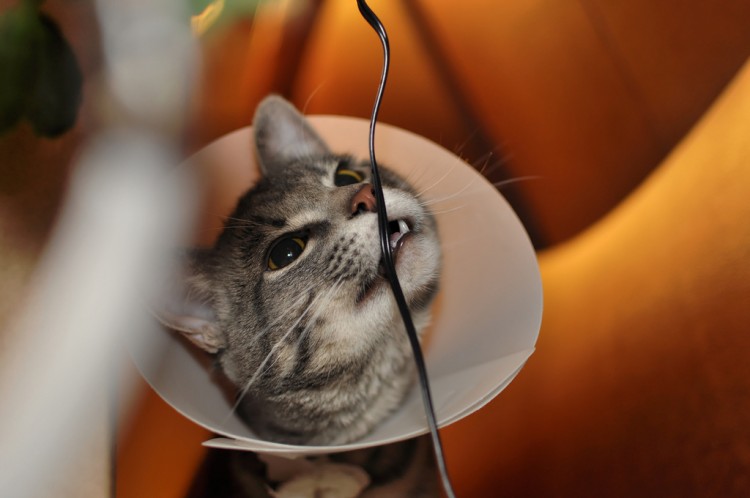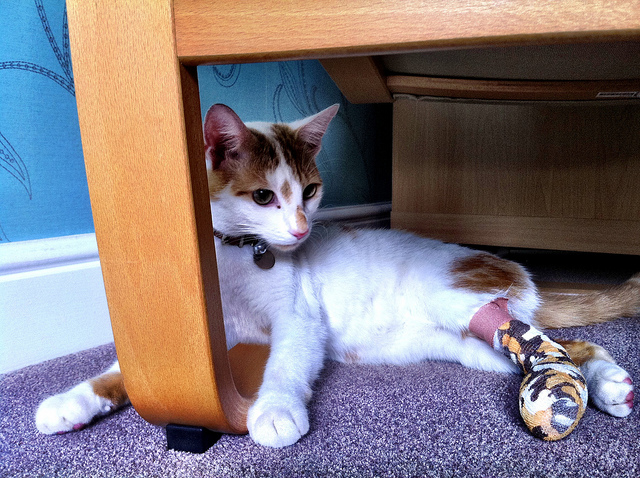This expert guide to cat surgery was written by veterinarians Dr. Pippa Elliott, BVMS, MRCVS, and Dr. Debora Lichtenberg, VMD, as well as board-certified veterinary surgeon Dr. Phil Zeltzman, DVM, DACVS, CVJ. Kelly Serfas and Katie Kegerise, both certified veterinary technicians, also contributed. This article was reviewed by Dr. Elliott and was last updated May 23, 2024
If you have questions or concerns, call your vet, who is best equipped to ensure the health and well-being of your pet. This article is for informational purposes only and is not a substitute for professional medical advice, diagnosis or treatment. See additional information.

Understanding Cat Surgery and What to Expect
When your veterinarian recommends cat surgery, it can be a daunting and emotional experience. Whether it’s a routine procedure or a more complex operation, knowing what to expect can help ease your worries and ensure the best care for your feline friend.
For detailed information on preparing your dog for surgery and post-operative care, visit our comprehensive guide on dog surgery.
Why Might My Feline Friend Need Cat Surgery?
Cats may need cat surgery for various reasons, ranging from routine procedures to emergency operations. Common reasons include:
- Spaying or neutering
- Tumor removal
- Dental issues such as periodontal disease or fractured teeth
- Foreign objects ingested
- Urinary obstructions
- Gastrointestinal obstructions
- Orthopedic issues
- Eye problems like cataracts or glaucoma
Preparing For a Cat Surgery
Preparing your cat for surgery involves several steps to ensure their safety and smooth recovery. Here are some essential preparations:

The Night Before Surgery
- Remove all food the night before the surgery, usually after 10 p.m.
- Water is typically allowed until early morning, but follow your vet’s specific instructions.
The Morning of Surgery
- Do not feed your cat any food or treats on the morning of the surgery.
- Ensure your cat uses the litter box before leaving for the clinic.
Cat Specific Preparation
If you have a lone indoor cat, then things couldn’t be simpler: Take their food away at bedtime the night before, and remove the water at 7 a.m.
It helps if you’ve trained your cat in advance to be happy in the carrier so they’re not stressed.
In a multi-cat household or if the cat goes outdoors, things are a bit trickier. Either remove all the cats’ food or else keep the patient in a separate room with water and a litter tray.
Keep an outdoor cat inside the night before surgery — then you’ll know they haven’t dined elsewhere, and they don’t disappear when it’s time to leave.
If this is super difficult, speak with the clinic’s staff members. They are often happy to admit your pet the night before so they are safe in a bed, ready and waiting for the main event.

What to Expect on the Day of Surgery
Leaving your cat at the veterinary clinic can be stressful, but knowing what happens behind the scenes can provide peace of mind.
Pre-Op Checks
Upon arrival, your vet will conduct a thorough examination of your cat, focusing on their heart, lungs, and overall health. Pre-anesthetic blood tests may also be performed to check for any underlying issues.
Anesthetic and Pain Relief
Your cat will receive a pre-medication injection to help them relax and manage pain. Once they are sufficiently sedated, the anesthesia will be administered, and the surgery will begin.
During Surgery
During the procedure, your cat will be closely monitored by the veterinary team. Vital signs such as heart rate, blood pressure, and oxygen levels will be continuously checked to ensure their safety.
Post-Surgery Care
After the surgery, your cat will be kept warm and comfortable as they recover from the anesthesia. The veterinary team will monitor them closely until they are fully awake.

Bringing Your Cat Home
Once your cat is ready to go home, your vet will provide detailed post-operative care instructions. This may include:
- Monitoring the incision site for signs of infection
- Administering prescribed medications
- Restricting your cat’s activity to ensure proper healing
- Using an Elizabethan collar to prevent licking or chewing the incision
Common Cat Surgeries

Spay/Neuter
Spaying involves removing the ovaries and uterus in females, while neutering involves removing the testicles in males. These procedures help control the cat population and prevent certain health issues.
Dental Surgery
Dental issues like tooth extractions and treatment for periodontal disease are common, especially in older cats. Dental surgery often requires general anesthesia for the cat’s safety and comfort.
Mass or Tumor Removal
If your cat develops abnormal growths, surgical removal may be necessary. These can be benign or malignant, and your vet will guide you through the treatment options.
Gastrointestinal Surgery
Cats may require surgery to remove foreign objects or to treat intestinal blockages. This surgery is essential when non-invasive treatments fail to resolve the issue.
Bladder Surgery
Conditions like bladder stones or urinary obstructions often require surgical intervention. Bladder surgery helps prevent life-threatening blockages and recurrent issues.
Wound Surgery
Cats can sustain wounds from fights, accidents, or other injuries. Surgical repair may be necessary to clean and close deep wounds, preventing infections.
Fracture Repairs
Cats can suffer from broken bones due to falls or accidents. Surgical intervention is often required to repair severe fractures and ensure proper healing.
Orthopedic Surgery
Orthopedic issues such as luxating patellae or cruciate ligament injuries may need surgical correction to restore your cat’s mobility and quality of life.

How to Cover the Costs of Cat Surgery
Understanding the costs associated with cat surgery is essential for every cat owner. Pet insurance can help cover many of these expenses, making it easier to provide the best care for your feline friend without financial stress.
This guide provides a comprehensive overview of cat surgery, helping you prepare for your cat’s operation and ensuring their smooth recovery. Always consult your veterinarian for specific advice and follow their recommendations for the best outcomes.
Frequently Asked Questions (FAQ)
How to spay a cat without surgery?
Spaying a cat without surgery is not possible; spaying always requires a surgical procedure to remove the reproductive organs.
How to keep your cat from jumping after surgery?
Keep your cat from jumping after surgery by confining them to a small, enclosed space and providing plenty of comfortable bedding.
How much does cat surgery cost?
The cost of cat surgery varies widely depending on the procedure but typically ranges from $300 to $3,000 or more.
What anatomical parts are removed from a female dog or cat during a spay surgery?
During a spay surgery, the ovaries and usually the uterus are removed from a female dog or cat.


